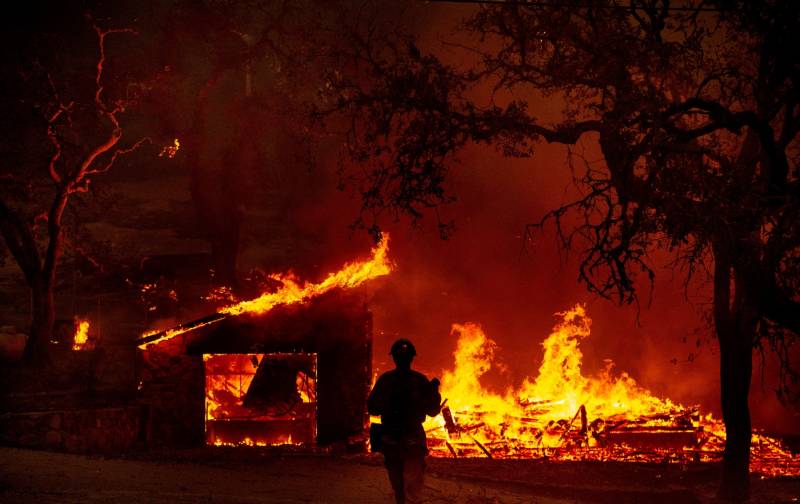The fire was one of a pair that began about sunset Sunday evening, possibly sparked by embers blown across the Napa Valley from the Glass Fire. Then, in a close parallel to the 2017 Tubbs Fire, the blazes merged as they made a rapid run across the hills along the Napa-Sonoma county line on a southwestern trajectory toward Santa Rosa.
Mandatory evacuation orders were issued before midnight Sunday for the following zones in and on the outskirts of Santa Rosa:
- Calistoga North
- Calistoga South/Skyhawk
- Pythian
- Melita
- Stonebridge
- Oakmont North
- Oakmont South
Residents in several other areas north and east of the city were also under orders to evacuate. The area, stretching roughly from Mark West Springs Road in the north to near Hood Mountain Regional Park in the south, includes zones: 2P1, 3G1, 3G2 and 3G3.
Several other areas in and near Santa Rosa were under evacuation warnings — advisories that residents must prepare to leave — early Monday, including:
- Northeast 2
- Northeast 3/Middle Rincon
- Springlake
- Summerfield
- Sonoma County zones 6A1, 6B1, 6B2
Also early Monday, Napa County authorities expanded mandatory evacuation orders near the Glass Fire.
Update, 10:45 p.m. Sunday: A fire that moved slowly but relentlessly through the hills on the east side of the Napa Valley near the town of St. Helena all day Sunday was joined during the evening by two more blazes that were whipped by high winds across the mountain ridges on the west side of the valley into Sonoma County and toward the city of Santa Rosa.
The Glass Fire started near the community of Deer Park just before 4 a.m. Sunday and prompted an all-out effort by Cal Fire's Sonoma-Lake-Napa Unit to rein it in as it edged toward St. Helena and posed a threat to the nearby towns of Angwin and Calistoga. The blaze had burned about 2,500 acres by nightfall and was 0% contained.
But just after sunset Sunday, with a gusty, bone-dry northeasterly wind blowing across the higher ridges in the area, a pair of fires ignited all the way across the valley to the west. Dubbed the Shady Fire and Boysen Fire, they quickly blew into a major conflagration that burned rapidly to the south and west toward Santa Rosa.

